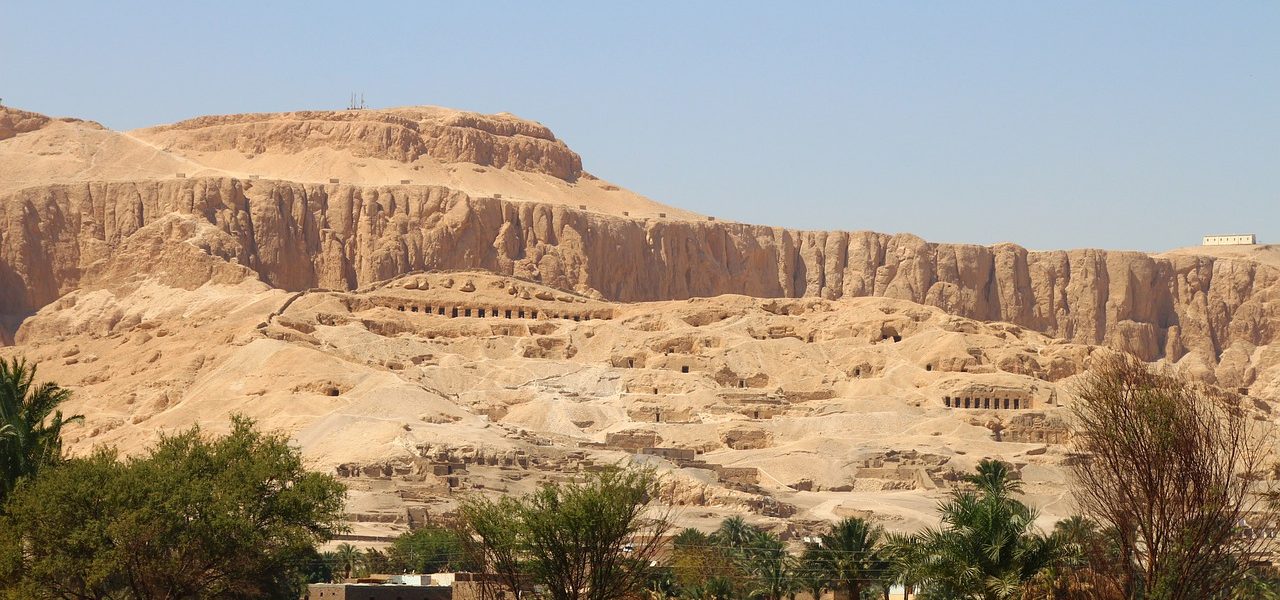Valley of the Kings
Located on the western bank of the Nile in Luxor, the Valley of the Kings contains one-third of the world’s monuments.
the Valley of the Kings contains the most famous historical tombs in the world.
where the Pharaohs buried their kings for 500 years.
The Valley is known as the “Great Funeral City” and named by the Hieroglyphics (Ta Secht Maat) Means the Great Valley.
The number of tombs discovered about 63 cemeteries, both royal and non-royal.
valley of kings location
The Valley of the Kings is situated on the west bank of the Nile River, across from the ancient city of Thebes (modern-day Luxor). Its location was chosen because it was believed to be a sacred and secluded place, suitable for the burials of pharaohs.
Valley of the Kings in luxor
The Valley of the Kings is a famous archaeological site located on the west bank of the Nile River near Luxor, in southern Egypt. It is renowned for being the burial place of many ancient Egyptian pharaohs, including some of the most well-known rulers of the New Kingdom period.
Tombes of luxor valley of the kings
Tombs: The valley contains more than 60 tombs, many of which are cut into the rock of the surrounding hills. The tombs were intricately decorated with religious texts, paintings, and carvings depicting scenes from the deceased pharaoh’s life and the journey to the afterlife. The most famous tomb in the valley is that of Tutankhamun, discovered by Howard Carter in 1922.
There are 15 tombs allowed to Enter.
The tombs
Included on the main Entrance tickets:
Ramses III – Ramses VII – Merenptah Tomb – Seti II – Tomb of Siptah -Tomb of Ramses IX –
Tomb of Tausert or Setnakhte
Extra tombs:
Tomb of King Tutankhamen – Tomb of Seti I – Ramesses VI
Tomb of Tutankhamun
One of the most famous tombs of the Valley of the Kings is the tomb of Little ” King Tutankhamen“, which caused a stir in the world when it was discovered by Howard Carter. Scientists believe that the ancients chose the Valley of the Kings to be the place to commemorate them before moving to another life. That’s because of the pyramid shape of the mountain, which is about 300 meters high.
Tutankhamun, also known as King Tut, was a relatively minor pharaoh of the 18th dynasty, but his tomb gained immense fame due to its discovery with its treasures largely intact. The treasures from Tutankhamun’s tomb are now housed in the Grand Egyptian Museum in Cairo.
Tomb of Ramses VI
In one of the most beautiful tombs in the Valley of the Kings lies the tomb of No. 2 on the right side of the road outside the direct entrance barrier. The tomb, which was looted by thieves in ancient times, not found in the mummy of Ramesses IV.
Above the entrance to the tomb stands the golden sun disk, which represents the “God Ra” symbol of power, and on both sides of the solar disk, we see Isis and Nephthys.
Inside the cemetery, there is a large granite ark, which is more than 10 feet in length and 7 feet wide, and a height of more than 8 feet.
The ceiling of the room has a drawing of the goddess Note, with its starry body, and behind the burial chamber.
Tomb of Seti I
Egypt’s Pharaoh, Seti I, the second king of the Nineteenth Dynasty, was one of the most beautiful tombs with wall engraving and decoration.
And the cemetery is the longest and deepest among all the tombs of the Valley of the Kings so far, as it extends for a distance of approximately 137 meters and includes eleven rooms of high-quality reliefs.
Book Now: Luxor tour, full-day visit West bank of the Nile, Valley of the queens, Hatshepsut Temple, Colossi of Memnon.
Read More




